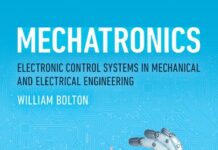| Book Name: | Springer Handbook of Mechanical Engineering |
| Category: | Mechanical Books |
| Language: | English |
| Format: | |
| Free Download: | Available |
Free Download Springer Handbook of Mechanical Engineering PDF Book
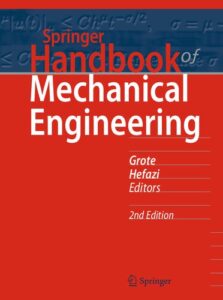
Book Description :
Encyclopedias describe Mechanical Engineering as a professional engineering discipline that involves the application of principles of physics for the analysis, design, manufacturing, and maintenance of mechanical systems. It requires a solid understanding of key concepts including mechanics, kinematics, thermodynamics and energy. Mechanical engineers use these principles and others for example in the design and analysis of automobiles, aircrafts, heating and cooling systems, industrial equipment and machinery. In addition to these main areas, specialized fields are offered at universities to prepare future engineers for their position in industry, such as: mechatronics and robotics, transportation and logistics, cryogenics, fuel technology, automotive engineering, biomechanics, vibration, optics and others.Accordingly, the Springer Handbook of Mechanical Engineering devotes its contents to these areas of interest for the practicing engineer as well as for the student at various levels and educational institutions.Authors from all over the world have contributed with their expertise and support the globally working engineer in finding a solution for today’s mechanical engineering problems.
Table of contents :
Preface
About the Editors
List of Authors
Contents
List of Abbreviations
Part A Fundamentals
1 Introduction to Mathematics
1.1 Linear Algebra
1.2 Differential Equations
1.3 The Laplace Transform
1.4 Fourier Analysis
1.5 Complex Analysis
References
2 Mechanics
2.1 Statics of Rigid Bodies
2.2 Dynamics
References
3 Thermodynamics
3.1 Scope of Thermodynamics and Definitions
3.2 Temperatures and Equilibria
3.3 First Law of Thermodynamics
3.4 Second Law of Thermodynamics
3.5 Exergy and Energy
3.6 Thermodynamics of Substances
3.7 Changes of State of Gases and Vapors
3.8 Thermodynamic Processes
3.9 Ideal Gas Mixtures
3.10 Heat Transfer
References
Part B Materials
4 Atomic Structure and Microstructure Characterization
4.1 Order in Solid State
4.2 Microstructure Characterization
References
5 Mechanical Properties
5.1 Mechanical Properties
5.2 Physical Properties
References
6 Corrosion and Corrosion Resistance
6.1 Fundamental Aspects
6.2 Electrochemical Corrosion
6.3 Chemical Corrosion and High-Temperature Corrosion
6.4 Corrosion Testing
References
7 Nondestructive Inspection (NDI)
7.1 Principles of Nondestructive Inspection
7.2 Acoustic Methods
7.3 Potential Drop Method
7.4 Magnetic Methods
7.5 Electromagnetic Methods
7.6 Thermography
7.7 Optical Methods
7.8 Radiation Methods
7.9 Health Monitoring
References
8 Engineering Materials and Their Properties
8.1 Iron-Based Materials
8.2 Aluminum and Its Alloys
8.3 Magnesium and Its Alloys
8.4 Titanium and Its Alloys
8.5 Ni and Its Alloys
8.6 Co and Its Alloys
8.7 Copper and Its Alloys
8.8 Polymers
8.9 Glasses and Ceramics
8.10 Composite Materials
References
9 Tribology
9.1 Importance of Tribology
9.2 Tribological System (Tribosystem)
9.3 Friction
9.4 Wear
9.5 Fundamentals of Lubrication
9.6 Lubricants
References
Part C Manufacturing
10 Casting
10.1 The Foundry Industry
10.2 Cast Alloys
10.3 Primary Shaping
10.4 Shaping of Metals by Casting
10.5 Guidelines for Design
10.6 Preparatory and Finishing Operations
References
11 Metal Forming
11.1 Metallurgical Fundamentals
11.2 Theoretical Foundations
11.3 Bulk Forming Processes
11.4 Sheet Forming Processes
11.5 Forming Machines
References
12 Machining Processes
12.1 Cutting
12.2 Machining with Geometrically Nondefined Tool Edges
12.3 Nonconventional Machining Processes
References
13 Precision Machinery Using MEMS Technology
13.1 Electrostatic-Driven Optical Display Device
13.2 Design of the Device
13.3 Evanescent Coupling Switching Device
References
14 Measuring and Quality Control
14.1 Quality Management
14.2 Manufacturing Measurement Technology
14.3 Further Reading
References
Part D Machine and Systems Design
15 Machine Elements
15.1 Basic Dimensioning Principles
15.2 Fasteners
15.3 Axles and Shafts
15.4 Shaft–Hub Connections
15.5 Rolling Bearings
15.6 Plain Bearings
15.7 Seals and Gaskets
15.8 Gears and Gear Trains
15.9 Springs
15.10 Pipes
References
16 Engineering Design
16.1 Design Theory
16.2 Engineering Design Basics
16.3 Precisely Defining the Task
16.4 Conceptual Design
16.5 Design
16.6 Design and Manufacturing for the Environment
16.7 Failure Mode and Effect Analysis for Capital Goods
16.8 Bioindustrial Design: Challenges and Vision
References
17 Piston Machines
17.1 Foundations of Piston Machines
17.2 Positive Displacement Pumps
17.3 Compressors
17.4 Internal Combustion Engines
References
18 Pressure Vessels and Heat Exchangers
18.1 Pressure Vessels – General Design Concepts
18.2 Design of Tall Towers
18.3 Testing Requirements
18.4 Design Codes for Pressure Vessels
18.5 Heat Exchangers
18.6 Construction Materials
References
19 Turbomachinery
19.1 Theory of Turbomachinery Stages
19.2 Blade Design
19.3 Gas Turbine Engines: Design and Dynamic Performance
References
20 Conveying and Construction Machinery
20.1 Background and Fundamentals
20.2 Bulk Solid Mechanics and Characterization
20.3 Basic Mechanical Elements
20.4 Continuous Conveyors
20.5 Discontinuous Conveyors
20.6 Storage Systems
References
Part E Transportation – Mobility
21 Trends and Challenges in Mobility and Transportation
21.1 Overview
21.2 Impact of Safety and Environmental Legislation Transportation Technologies
21.3 Upcoming Changes in Transportation
21.4 Automotive Technology
21.5 Aerospace Technology
21.6 Rail Technology
References
22 Automotive Engineering
22.1 Characteristics and Trends of Car Development
22.2 Targets and Challenges for Car Development
22.3 Car Development Processes
22.4 Methods for Car Development
References
23 Railway Systems–Railway Engineering
23.1 General Interactions of Modules of a Railway System with Surroundings
23.2 Track
23.3 Running Gears
23.4 Superstructures
23.5 Vehicles
23.6 Coupling Systems
23.7 Safety
23.8 Air Conditioning
References
24 Aerospace Engineering
24.1 Aerospace Industry
24.2 Aerospace Technology and Development
24.3 Aircraft
24.4 Spacecraft
24.5 Definitions
24.6 Flight Performance Equations
24.7 Airplane Aerodynamic Characteristics
24.8 Airplane General Configurations
24.9 Weights
24.10 Aircraft Performance
24.11 Stability and Control
24.12 Loads
24.13 Airplane Structure
24.14 Airplane Maintenance Checks
References
25 Ships and Maritime Transportation
25.1 Overview
25.2 Ship Geometry and Definitions
25.3 Hydrostatics and Stability
25.4 Resistance and Powering
25.5 Structure
25.6 Additional Considerations
25.7 Summary
References
Part F Related Engineering Fields
26 Electrical Engineering
26.1 Fundamental Laws
26.2 Capacitors, Resistors, and Inductors
26.3 Semiconductor Devices
26.4 Networks
26.5 Electrical Machines
26.6 Energy Storage
References
27 Power Generation
27.1 Energy Conversion Principles
27.2 Primary Energy
27.3 Boilers and Furnaces
27.4 Combustion
27.5 Nuclear Power Plants
27.6 Renewable Energy
27.7 Energy Storage and Distribution
27.8 Prospects and Conclusion
References
Part G Annex
28 General Tables
References
Subject Index
Download Springer Handbook of Mechanical Engineering PDF
Author(s): Karl-Heinrich Grote, Hamid Hefazi (eds.)
Series: Springer Handbooks
Publisher: Springer, Year: 2021
ISBN: 9783030470357,3030470350

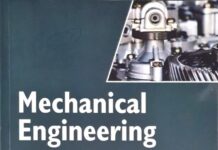
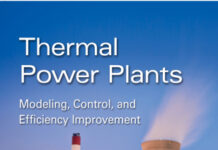
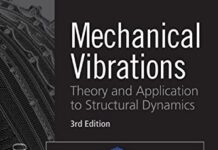
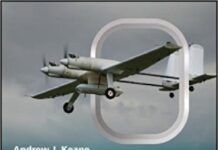

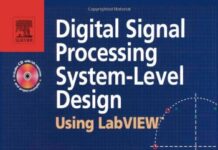

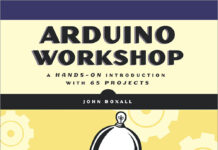
![[PDF] Draw Buildings and Cities in 15 Minutes Draw Buildings and Cities in 15 Minutes pdf](https://www.freepdfbook.com/wp-content/uploads/2021/06/Draw-Buildings-and-Cities-in-15-Minutes-218x150.jpg)


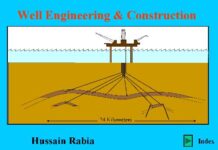
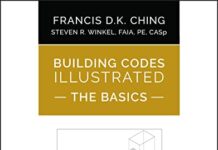
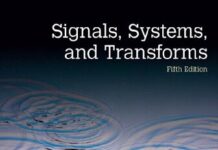

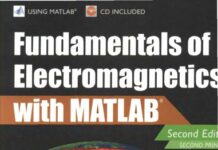

![[PDF] Digital Image Processing An Algorithmic Introduction Using Java Digital Image Processing An Algorithmic Introduction Using Java](https://www.freepdfbook.com/wp-content/uploads/2022/06/Digital-Image-Processing-An-Algorithmic-Introduction-Using-Java.jpg)




![[PDF] 43 Years JEE ADVANCED + JEE MAIN Chapterwise & Topicwise Solved Papers 43 Years JEE ADVANCED (1978-2020) + JEE MAIN Chapterwise & Topicwise Solved Papers Physics PDF](https://www.freepdfbook.com/wp-content/uploads/2022/03/43-Years-JEE-ADVANCED-1978-2020.jpg)

![[PDF] Problems in Physical Chemistry for JEE (Main & Advanced) Problems in Physical Chemistry for JEE (Main & Advanced) Free PDF Book Download](https://www.freepdfbook.com/wp-content/uploads/2022/03/Problems-in-Physical-Chemistry-for-JEE-Main-Advanced.jpg)
![[PDF] Engineering Physics (McGraw Hill)](https://www.freepdfbook.com/wp-content/uploads/2021/05/bafc8c2685bb6823a9c56134f7fba5df.jpeg)
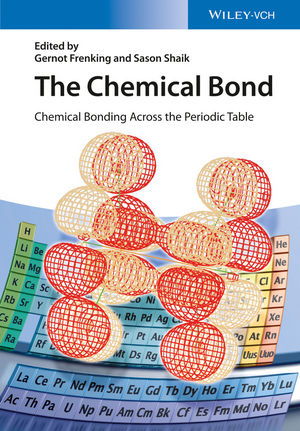
![[PDF] Engineering Chemistry By Shashi Chawla](https://www.freepdfbook.com/wp-content/uploads/2022/05/Theory-And-Practicals-of-Engineering-Chemistry-By-Shashi-Chawla-free-pdf-book.jpeg)
![[PDF] Chemistry: An Introduction to Organic, Inorganic & Physical Chemistry Chemistry: An Introduction to Organic, Inorganic & Physical Chemistry](https://www.freepdfbook.com/wp-content/uploads/2022/04/Chemistry-An-Introduction-to-Organic-Inorganic-Physical-Chemistry.jpg)
![[PDF] Essentials of Physical Chemistry Essentials of Physical Chemistry Free PDF Book by Bahl](https://www.freepdfbook.com/wp-content/uploads/2022/04/Essentials-of-Physical-Chemistry-bahl.jpg)
![[PDF] Biological control of plant-parasitic nematodes: soil ecosystem management in sustainable agriculture Biological control of plant-parasitic nematodes: soil ecosystem management in sustainable agriculture](https://www.freepdfbook.com/wp-content/uploads/2022/05/Biological-control-of-plant-parasitic-nematodes-soil-ecosystem-management-in-sustainable-agriculture.jpg)
![[PDF] Human Anatomy: Color Atlas and Textbook Human Anatomy: Color Atlas and Textbook Free PDF Book](https://www.freepdfbook.com/wp-content/uploads/2022/05/Human-Anatomy-Color-Atlas-and-Textbook.jpg)
![[PDF] Concepts of Biology Book [Free Download]](https://www.freepdfbook.com/wp-content/uploads/2022/05/Concepts-of-Biology.jpg)
![[PDF] Essentials of Biology [Free Download] Essentials of Biology Free PDF BOok Download](https://www.freepdfbook.com/wp-content/uploads/2022/05/Essentials-of-Biology-Free-PDF-Book-Downlaod.jpg)
![[PDF] Human Biology Book [Free Download]](https://www.freepdfbook.com/wp-content/uploads/2022/05/PDF-Human-Biology-Book-Free-Download.jpg)
